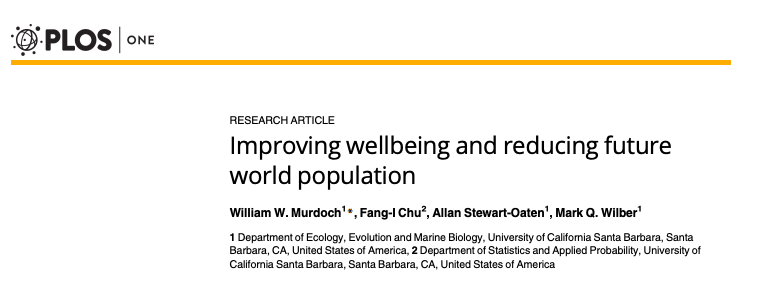File: Download
Date of Publication: September 12, 2018
Publisher: PLOS One
Author(s): William W. Murdoch, Fang-I Chu, Allan Stewart-Oaten, Mark Q. Wilber
Abstract
Almost 80% of the 4 billion projected increase in world population by 2100 comes from 37 Mid-African Countries (MACs), caused mostly by slow declines in Total Fertility Rate (TFR). Historically, TFR has declined in response to increases in wellbeing associated with economic development. We show that, when Infant Survival Rate (ISR, a proxy for wellbeing) has increased, MAC fertility has declined at the same rate, in relation to ISR, as it did in 61 comparable Other Developing Countries (ODCs) whose average fertility is close to replacement level. If MAC ISR were to increase at the historic rate of these ODCs, and TFR declined correspondingly, then the projected world population in 2100 would be decreasing and 1.1 billion lower than currently projected. Such rates of ISR increase, and TFR decrease, are quite feasible and have occurred in comparable ODCs. Increased efforts to improve the wellbeing of poor MAC populations are key
The views and opinions expressed through the MAHB Website are those of the contributing authors and do not necessarily reflect an official position of the MAHB. The MAHB aims to share a range of perspectives and welcomes the discussions that they prompt.
